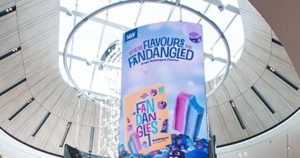Sticking with what you know is a sound business approach, but it can too often lead to overly cautious practices. Staying afoot of your competition requires you to think a bit beyond your comfort zone sometimes. In part due to customers familiarity with the product, LCD display technology is currently more popular for enterprise-wide roll outs, but LED solutions are where the display industry is quickly turning its focus, and for good reason. Studies have shown that LED display solutions are far and away the most effective and efficient display medium. Notably, the US Small Business Association published a report declaring that in terms of cost per thousand impressions LED displays blew competition out of the water. These well-documented advantages have influenced the decision making processes of countless digital display end-users but an equally relevant factor driving the ascent of enterprise-wide LED display roll outs is the emergent popularity of service-based purchasing structures.
Removing the Barriers to LED Display Acquisition
By adapting purchasing models to let end-users pay for LED technology on an affordable monthly subscription basis, LED display manufacturers have made their products exponentially easier to acquire. The predictable monthly payments are more affordable for companies with capex concerns, and eliminate the daunting upfront costs that end-users often assume are part and parcel of the LED display integration experience. By restructuring the purchasing process into a service-based format, LED manufacturers allow potential end-users to classify and pay for the display installation as an operating expense. This leaves end-users with quite a bit more financial flexibility. This flexibility is only enhanced if end-users sell some of their display space to advertisers. In many cases, end-users will be able to generate revenue from selling their display space that exceeds their monthly subscription costs to the display manufacturer, meaning that from the moment the display is installed it will begin making them money.
Service-based selling structures are long-term arrangements by nature. In order to generate value from the sale, manufacturers need their customers to keep paying for the service. The manufacturers who provide these services therefore have a fundamental interest in making sure that the service(s) they provide are consistently exceptional. With regard to LED display technology, this materializes in the form of display network management, support, and upgrade offerings. These non-hardware deliverables counter the other advantage LCD has traditionally held: familiarity. If a manufacturer pledges to provide services that eliminate any need for an end-user to become an expert in something other than their own business, that end-user no longer needs to be deterred by unfamiliarity with that manufacturer’s product. Lack of familiarity with LED is irrelevant if the LED providers handle all the complexities for you. That allows businesses and organizations to roll out LED displays throughout their operation without needing to concern themselves with the intricate ins and outs of how exactly the tech works. It’s worth it for end-users to pay for the tech as if it’s a service because it also comes with continuing services they wouldn’t otherwise receive. The tech in an LED display has always outperformed rival display technologies, but now that all the other elements of the display purchasing experience measure up as well, it’s tough to make a case for anything other than LED when it comes to your next roll out.

